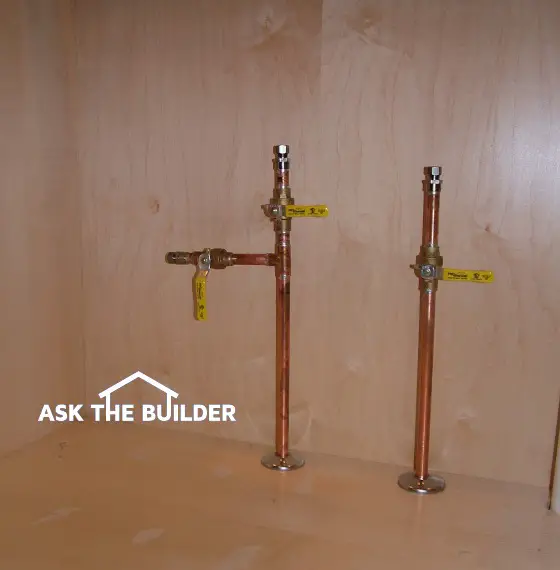Copper Tubing

This copper tubing was cut and soldered before it was installed in the cabinets. With the right tools and some patience the average person can achieve professional results. PHOTO CREDIT: Tim Carter
DEAR TIM: I would like to install some new copper tubing in my house. This new copper pipe will replace some old galvanized iron piping. Are copper pipes hard to work with? Can I connect the new copper piping to the old galvanized iron pipe? I need to learn how to solder copper pipe for this job. Can you teach me? Lisa L., Matawan, NJ
DEAR LISA: Copper tubing and copper pipe are one and the same, but you would be surprised how many people think they are different materials. The job you are describing can be difficult, especially if you are trying to install new copper tubing throughout the entire house. If you are just starting with one fixture, you should be able to complete this job with no leaks.
Copper tube or tubing can be purchased in different diameters and hardness or temper. Hard copper tubing is drawn and is very stiff. If you try to bend it, you will almost always kink the tube. Soft or annealed copper tubing typically comes in rolls and is fairly easy to bend in large sweeping curves.
Hard copper tubing is typically joined together by soldering fittings onto the ends of the pipe or tube. You can seal joints with hard copper using a mechanical compression fitting. Soft copper can also be soldered, but many people chose to use mechanical flare or compression fittings that seal joints by pressure.
The most difficult connection will be where you connect the new copper tubing to the old galvanized iron piping. You have to be extremely careful as you remove the old threaded piping from the threaded fittings. Often the pipe snaps off inside the fitting because the piping has deteriorated over time. Another common mistake is moving or bumping the old piping. Sometimes the old pipes are in a state of dynamic equilibrium where moderate movement or stress causes a leak to develop at some other location away from where you are working.
You can connect the new copper piping to the galvanized iron piping, but you need to use special connectors that isolate the two metals. If you allow the copper to contact the galvanized iron piping directly, a galvanic reaction occurs, and causes the iron piping to corrode. Eventually a leak will develop at this spot of corrosion.
The special connectors can be found at plumbing supply houses that sell primarily plumbing fixtures, piping and fittings. A hardware store or home center might have what you need. I prefer dielectric unions for the job. This special fitting has a threaded component that will attach to the galvanized iron piping, and the other end is a simple soldered connection that works well with your new copper tubing.
Soldering copper tubing is not that hard. It requires some skill, but I am convinced you can do it. People get into trouble when they try to solder copper tubing in tight spaces where the torch can scorch combustible materials or ignite flammable scrap material inside walls. It is imperative that you have a fire extinguisher handy and plenty of buckets of water drawn and ready before you shut off the water supply to the house.
If you do set the house ablaze, call the fire department immediately unless you feel you can completely extinguish the fire within seconds. If there is a shred of doubt as to whether the fire is out, drop everything and call the fire department.
The first step in soldering copper tubing is to clean any oxidation, dirt, grease, etc. from the copper. This is true for both the copper tubing and the fittings. Small round wire brushes that are slightly larger than the inner diameter of the fittings are a great tool to clean fittings. Abrasive metal cloth or sandpaper can be used to clean the outside of the copper tubing.
Once the copper is bright and shiny, you apply a thin layer of flux or soldering paste. This chemical prevents oxidation of the copper as you apply heat from the torch. It is vital part of the soldering process.
Use a propane or acetylene torch to apply the heat to the assembled pipe and fitting. Heat the fitting for about ten to fifteen seconds and then remove the flame. Touch the lead-free solder to the edge of the fitting where the copper tubing enters the fitting. If the copper tubing and fitting has enough retained heat, the solder will melt and flow into the joint.
Once the solder has cooled, be sure to wipe off the copper tubing and fitting. You want to remove any excess soldering paste or flux. If this is left on the copper tubing or fitting, it can actually cause corrosion at a later date.
You can buy clever copper fittings that have the solder and flux already built into the fitting. You simply clean the outside of the copper tubing and the inside of the fitting until they are shiny. Then you insert the tubing into the fitting and apply heat. Once the temperature of the copper tubing and fitting hits a certain point, the solder melts and seals the joint. It is a very nifty invention.
Column 657